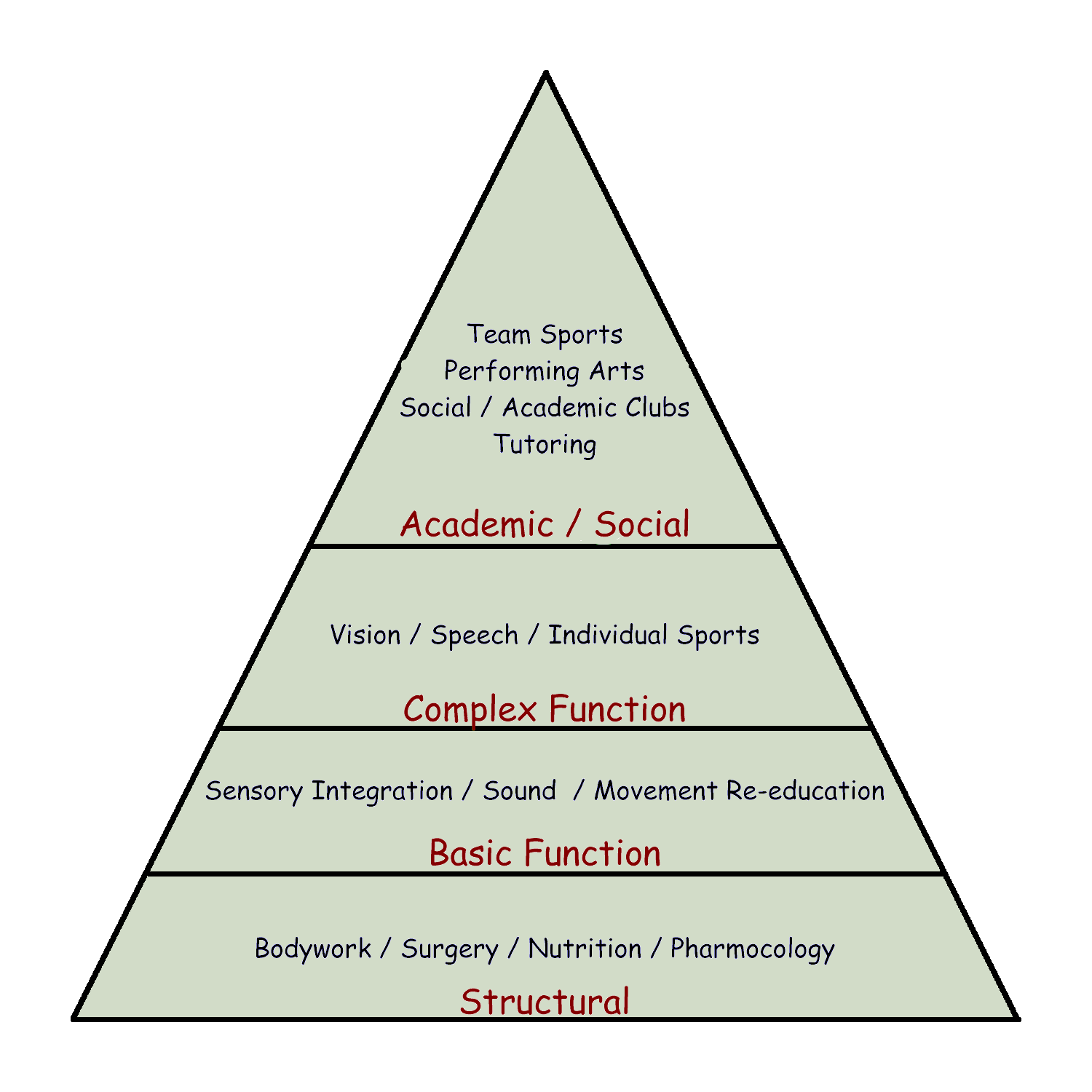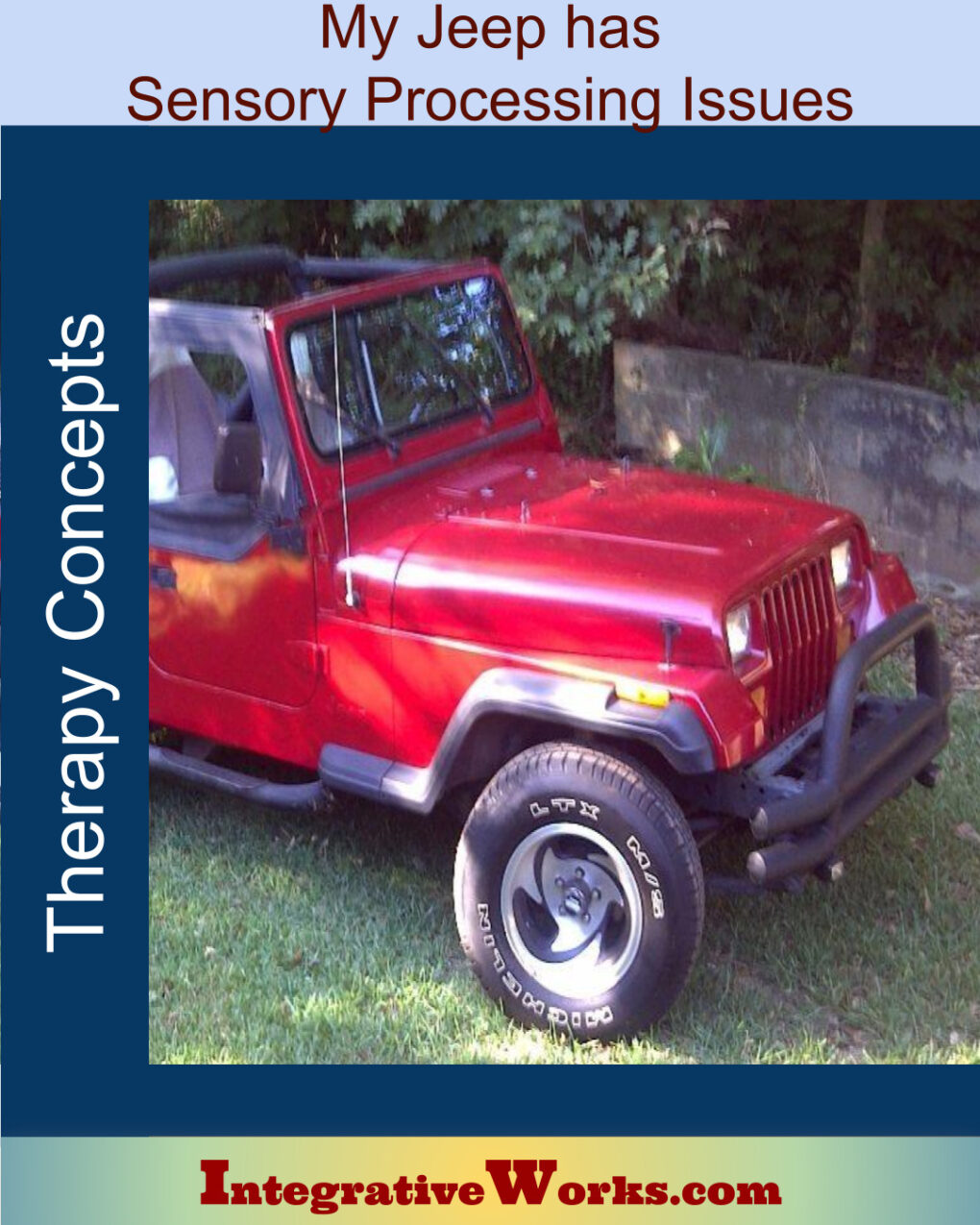I love The Jeep. People are always asking me how long I’ve had it. When I tell them that I’ve had it for 25 years, they smile and remark that it has been in good shape for 25 Years. I think, “well, it gets therapy when it needs it.”

You see, The Jeep sometimes has Sensory Integration Issues.
Cars have become more complex than ever at sensing and responding. Since fuel injection, they can adjust the mix based on gas quality. For years, they have been able to sense things like inside temperature, tire pressure, last oil change, and electrical problems. Now, cars have some fun sensors. I was walking a client to the car, and her Lexus could automatically tell when she was nearby and unlocked the door for her. I was riding with some friends, and the vehicle answered the phone. It knew the phone was in the car and synced up with Bluetooth. The sensors must connect to a complex set of processors for these processes to work.
The Jeep runs poorly when you give it lousy gas. I have to keep up with the tire pressure and oil changes. It doesn’t even have locks on the door. It is too noisy to talk on the phone. The central computer is not built for sensors and The Jeep doesn’t have most of those sensors anyway.
People are like Cars
People are like cars. When sensory processing improves, performance and comfort improve.
I’ve played with this in my own life. I could change my ability to draw using cranial work and sound therapy. After a few weeks of working on myself, I could produce an illustration for my book in about 15 or 20 minutes. Unfortunately, I couldn’t find an illustrator that could do it in less than double that time. Here is one of those illustrations.

Amazing, huh?
My body just got better at processing subtle sensory information than before. I had better focus and a longer attention span. I turned subtle corners faster and more accurately. Integrative Craniosacral does this for kids with Sensory Integration Dysfunction. It quells internal problems and improves their ability to pay attention in class, respond better to subtle social cues, and have better motor skills.
Good structure. The Foundation of Good Function.
The Jeep had a time when the whole thing just seemed to be running badly. It had less power, didn’t respond well, and used more gas. Finally, an electronics student came out and worked on it for about 90 minutes. I was amazed at how the whole Jeep ran better. Things that seem entirely unrelated, like the brakes, worked better. Pop, who was a mechanic, would say, “the electrical system is the nervous system of the car.” The sensors weren’t the problem; it was the wires and the processor.
The Sensory Integration Bodyworker understands this same thing about bodies.

Every functional therapy is dependent on the structure. In my years of working in practice with a Sensory Integration OT, we watched it repeatedly. I would work on the structure, and then send the child to OT. She would see big jumps in the child’s ability to succeed at challenging tasks. I saw the same thing with vision therapy and sound therapy.
Now, when I see a child with sensory issues, I think of The Jeep and smile. Clean the connections, get the systems to talk to each other, and reduce the static, so they have a smoother ride with better performance and are more comfortable. Their family will travel along better too.
Tony Preston treats adults and children in Atlanta, Georgia. Just click to read more about Integrative Bodywork and special needs children.


Comments are closed.